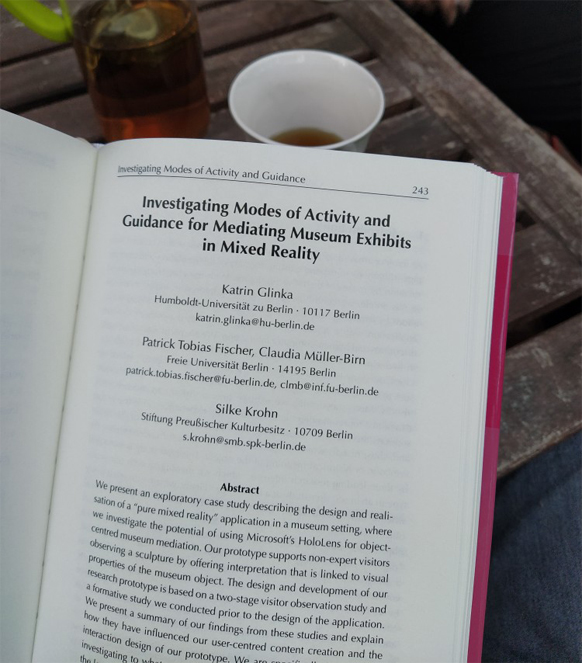Modes of Activity and Guidance for Mediating Exhibits in Mixed Reality
Publication
Abstract
We present an exploratory case study describing the design and realisation of a "pure mixed reality" application in a museum setting, where we investigate the potential of using Microsoft's HoloLens for objectcentred museum mediation. Our prototype supports non-expert visitors observing a sculpture by offering interpretation that is linked to visual properties of the museum object. The design and development of our research prototype is based on a two-stage visitor observation study and a formative study we conducted prior to the design of the application. We present a summary of our findings from these studies and explain how they have influenced our user-centred content creation and the interaction design of our prototype. We are specifically interested in investigating to what extent different constructs of initiative influence the learning and user experience. Thus, we detail three modes of activity that we realised in our prototype. Our case study is informed by research in the area of human-computer interaction, the humanities and museum practice. Accordingly, we discuss core concepts, such as gaze-based interaction, object-centred learning, presence, and modes of activity and guidance with a transdisciplinary perspective.
Reference
Katrin Glinka, Patrick Tobias Fischer, Silke Krohn, Claudia Müller-Birn. Investigating Modes of Activity and Guidance for Mediating Museum Exhibits in Mixed Reality. In Johann Habakuk Israel, Christian Kassung, Jürgen Sieck (Hrsg.): Kultur und Informatik (XVIII): "Extended Reality". vhw Verlag, Juli 2020, pp 243-268.

